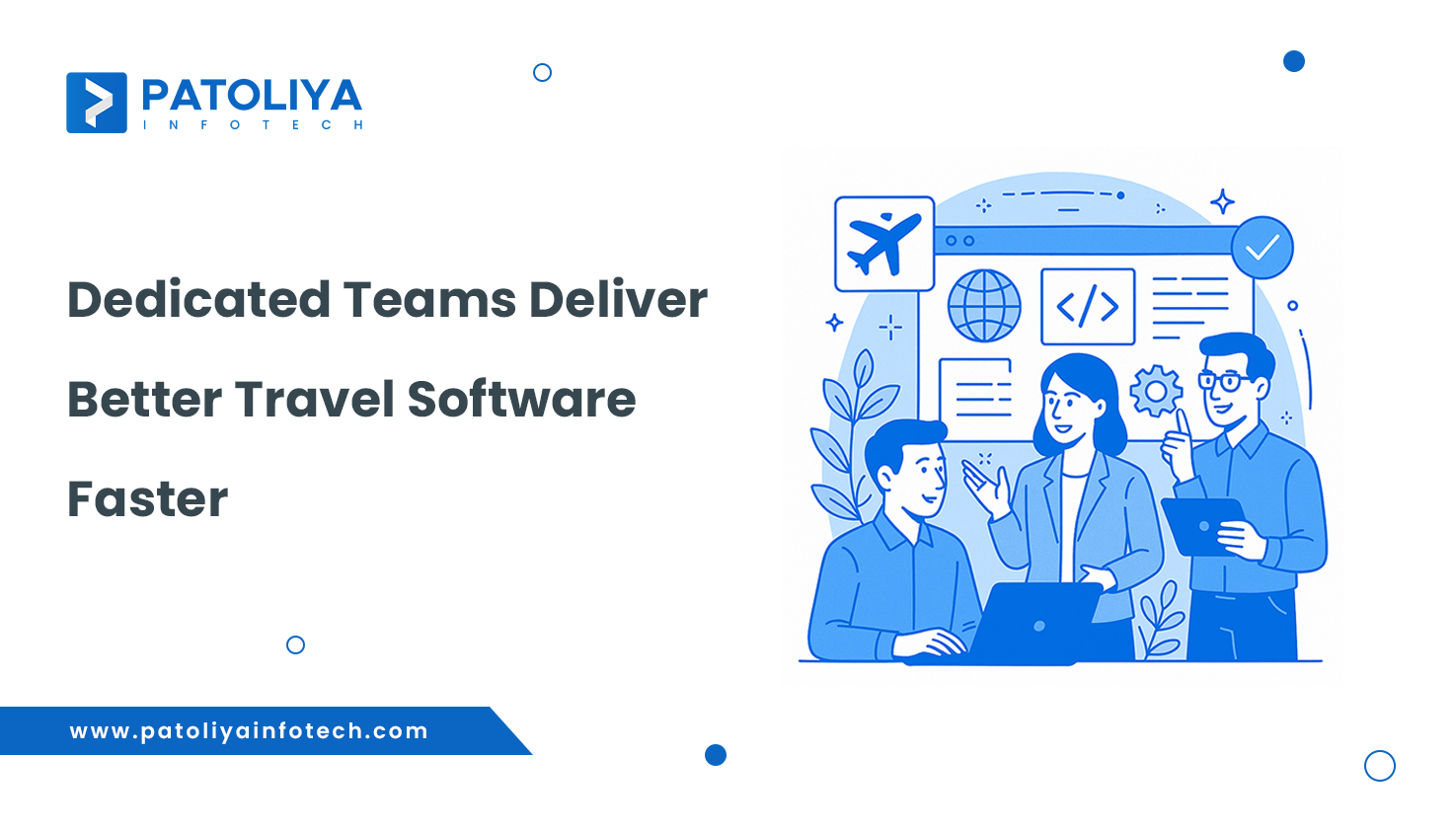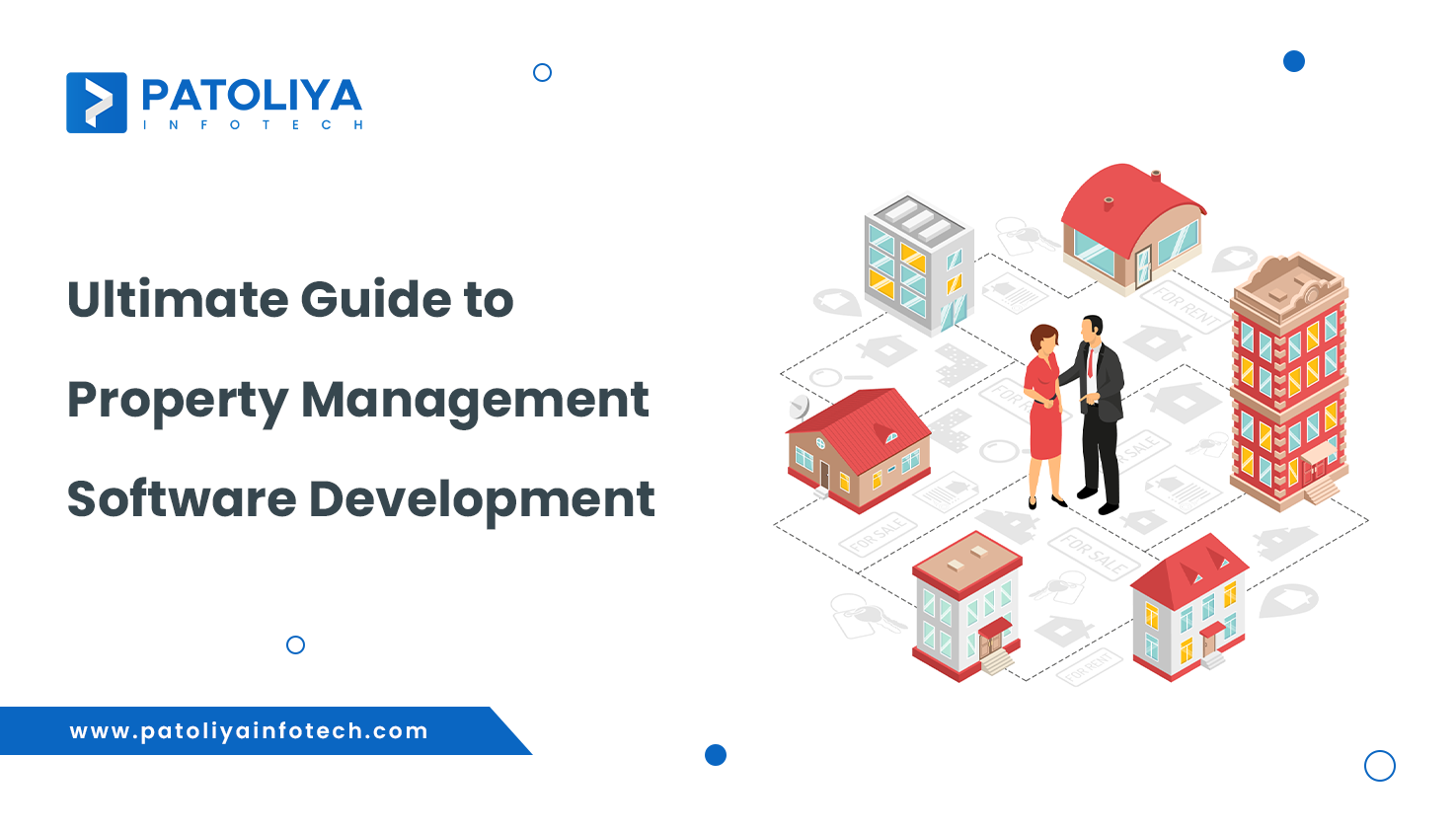Staff Augmentation vs Managed Services: A Comprehensive Guide to IT Service Models
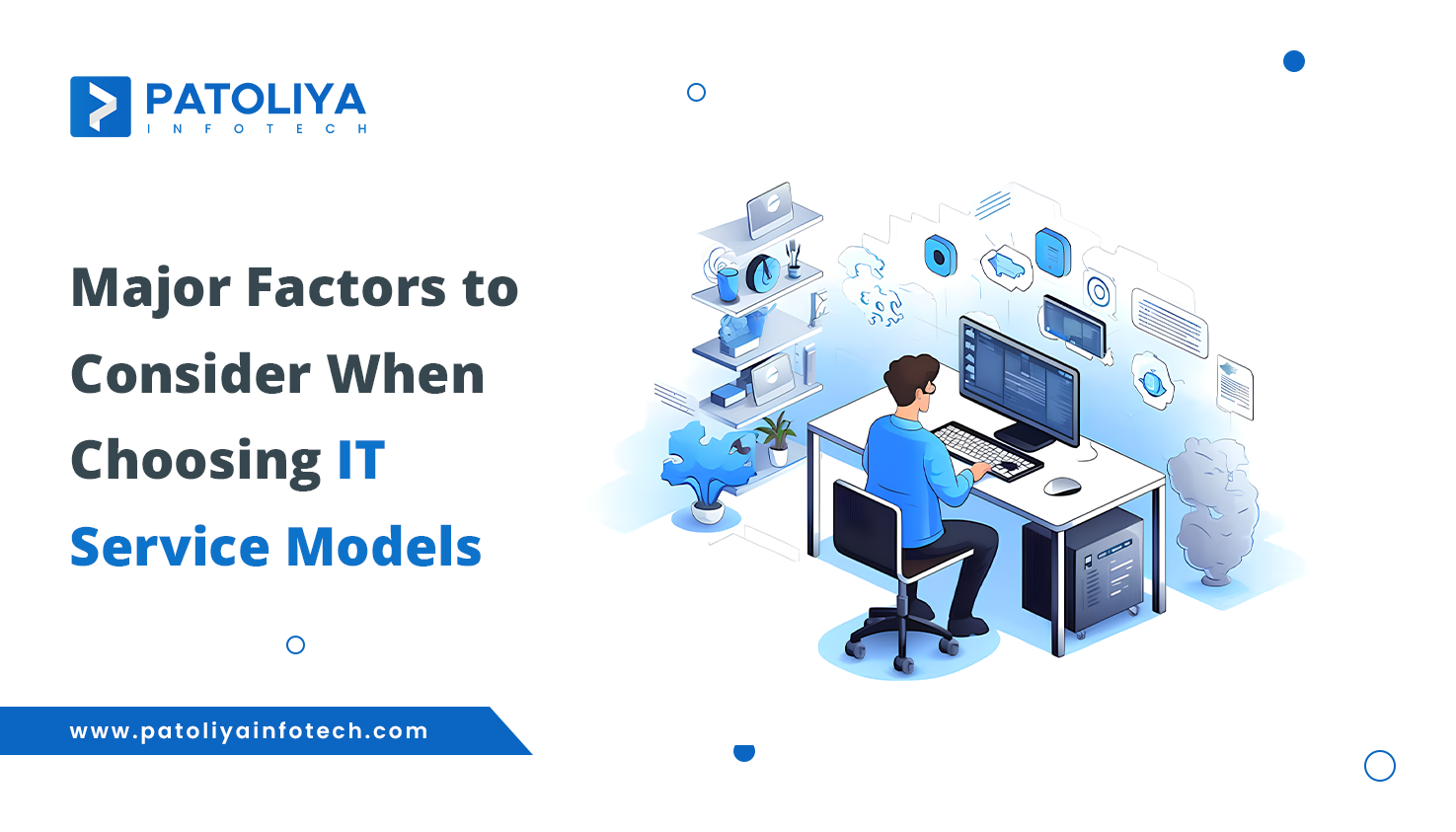
Table of Contents
Navigating the IT world can be challenging, especially when trying to keep up with ever-changing business requirements. Two distinct strategies can help: management and management. While both aim to increase productivity and effectiveness, they vary greatly in structure, design, and results.
Staffing promotions are bringing in outside experts to fulfill specific roles within your existing team or to complete key projects. This approach provides flexibility, flexibility, and the opportunity to apply unique skills without long-term downtime. Managing these external factors can be challenging, however, and requires seamless integration with your internal team.
Get a brief note on "When Should a Company Consider Staff Augmentation?"
On the other hand, managed services provide a comprehensive solution where an external service takes overall responsibility for specific IT services or processes. This approach can increase efficiency and allow your internal team to focus on key business functions. However, it requires greater confidence in the provider’s capabilities and a clearer understanding of service contracts.
In this blog, we will explore the management of employees and projects in more detail.
Understanding Staff Augmentation
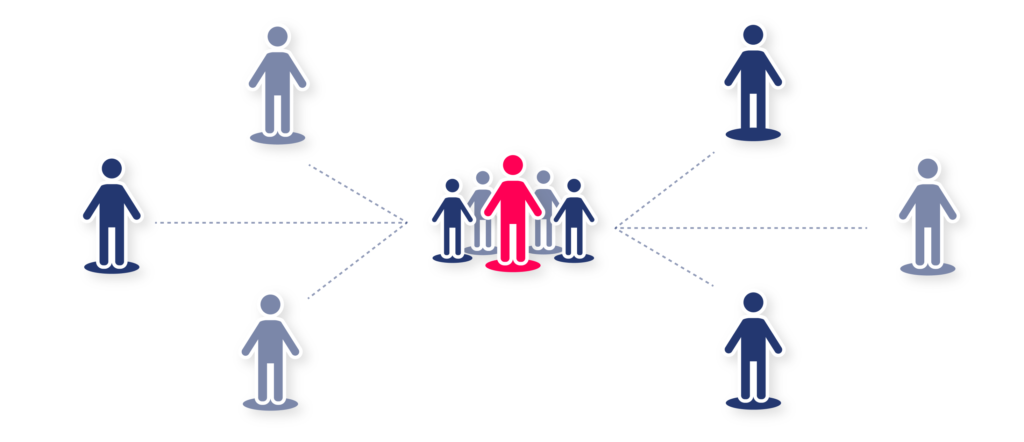
What is Staff Augmentation?
Staff augmentation is the process of adding outside workers to an organization's current staff. Without the long-term commitment that comes with permanent hiring, this strategy enables businesses to handle specialized expertise, quickly develop company divisions, or handle varying workloads.
Key Features of Staff Augmentation
- Flexibility: Easily scalable teams allow organizations to adjust to changing business needs. Businesses that have seasonal fluctuations or must respond swiftly to new opportunities may find this flexibility very helpful.
- Acquisition of key skills: Augmenting the workforce allows companies to tap into global talent pools, developing specialized skills that may not exist in the workplace. This is particularly valuable in areas such as software development, data analytics and cybersecurity.
- Cost savings: By hiring temporary employees, organizations can reduce the costs associated with full-time employees, such as benefits and long-term commitments This model allows for a wearable budget that is highly predictable for specific industries.
- Control over projects: Organizations retain full control over the project management process. They can identify directions, priorities and implementation methods, ensuring alignment between external stakeholders and internal objectives.

Types of Staff Augmentation:
- Nearshore Staff Augmentation: This involves recruiting talent from nearby and geographically contiguous countries. Having a larger workforce closer to the coast brings many benefits, including more uniform scheduling, cultural sharing, and easier communication.
- Offshore Staff Augmentation: This involves recruiting talent from geographically distant countries. A larger offshore workforce often provides a cost advantage due to lower staffing levels, although time differences and potential cultural barriers may have to be addressed.
When to Choose Staff Augmentation
- Short-term projects: Perfect for tasks with clear deadlines and skill needs in place.
- Skill Gap: When internal teams lack the required expertise for a particular task or technology.
- Rapid: When an organization must rapidly expand its workforce to meet the demands of the business without risking long-term hiring.
Understanding Managed Services
What are Managed Services?
Managed services include contracting with a third-party vendor to handle IT operations. Numerous services, including infrastructure management, application support, and continuous maintenance, are included in this strategy. Managed service providers (MSPs) take on the duty of overseeing and managing IT services, freeing up organizations to concentrate on their primary business operations.
Key Features of Managed Services
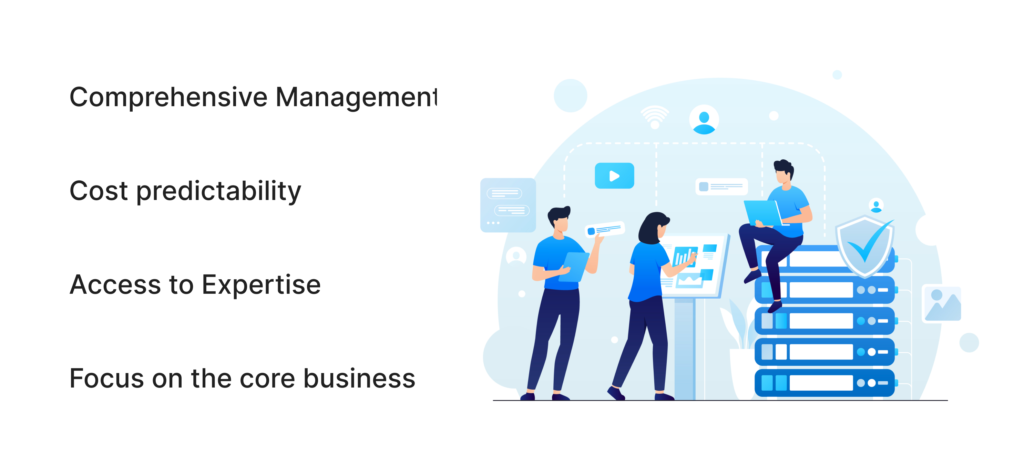
- Comprehensive Management: Managed Services offer an all-inclusive method of managing IT, encompassing everything from cybersecurity to network monitoring. Thanks to these broad capabilities, businesses may be able to eliminate tedious IT chores.
- Cost predictability: Managed projects usually have a fixed cost or subscription model, which provides businesses with a predictable budget for their IT expenses. This can support long-term financial planning.
- Access to Expertise: MSPs employ teams of specialists with diverse IT expertise. This suggests that companies can utilize the wealth of accessible expertise and experience without having to engage full-time staff.
- Focus on the core business: By focusing on their biggest strengths, organizations may innovate and grow without being hampered by IT problems thanks to the outsourcing of IT administration.
Cloud-Based Managed Services:
Cloud-based solutions have become part of managed services since the introduction of cloud computing. Businesses may take use of cloud technology's advantages without having to deal with the hassles of administering it internally thanks to these services, which provide scalable and flexible IT services.
When to Choose Managed Services
- Ongoing IT Support: Ideal for organizations that require ongoing IT support and services for their projects and services.
- Cost predictability: While budgeting for IT projects is key, managed projects offer fixed costs that make budgeting easier.
- Strategic IT Management: when companies wish to enhance their IT systems and operations without having to handle day-to-day operations, using outside expertise.
Staff Augmentation vs Managed Services: A Comparative Analysis
1. Scope of Work
- Staff Augmentation: Focuses on specific roles and tasks within the business. The organization defines the scope, and external professionals work with internal teams.
- SLAManaged Services: Includes a wide range of IT services. Using a SLA (Service Level Agreement), a service provider is in charge of providing general IT services or certain services.
2. Control and Oversight
- Staff Augmentation: Organizations hold control over project direction, strategies, and team development. This model allows for direct observation of the activated employees.
- Managed Services: The administration and operation of the IT services are within the service provider's control. Organizations have little direct power but benefit from the provider’s expertise.
3. Cost Structure
- Staff Augmentation: Generally speaking, the prices change according to the length of the engagement or the quantity of hours done. For short-term initiatives, this may lead to cost reductions.
- Managed Services: Usually involves a fixed monthly fee or subscription plan, which provides predictable costs for budgeting purposes.
4. Expertise and Resources
- Staff Augmentation: Provides specific skills for the duration of the project. The organization may need to look at dealing with increased staffing in the existing teams.
- Managed Services: Provides access to a team of experts who manage all IT operations. Organizations benefit from the provider’s expertise and collections.
Managed Services vs Staff Augmentation
Staff Augmentation vs. Managed Services: Key Differences
- Control and Oversight: The augmented team can be directly supervised and integrated with internal processes with more control thanks to staff augmentation. On the other hand, managed services provide all-inclusive solutions and assume complete accountability for IT management on behalf of the supplier.
- Flexibility and Scalability: More freedom in reorganizing teams to suit project requirements is provided by staff augmentation. The predetermined scope of managed services makes them potentially less flexible to last-minute alterations.
- Cost Structure: Whereas managed services offer long-term cost predictability with fixed monthly costs, staff augmentation may be more economical for short-term initiatives or transient skill shortfalls.
Choosing the Right Model for Your Business

When to Choose Staff Augmentation:
- Project-Based Needs: When additional resources are required for specific tasks defined and provided.
- Skill Gaps: If you want to fill short-term skills gaps without a long-term commitment, make sure your team has the skills they need to successfully complete tasks.
- Direct Control: If you want to establish direct control over the project and the team, it ensures alignment with organizational values and objectives.
When to Choose Managed Services:
- Ongoing IT Support: For continuous management and support of IT infrastructure, ensuring smooth operation and reliability.
- Focus on Core Activities: When you want to offload IT management responsibilities to focus on core business activities and strategic plannings.
- Cost Management: For predictable IT expenses and comprehensive service coverage, eliminating the financial unpredictability of in-house IT management.
Top IT Staff Augmentation Companies
Working with trustworthy businesses is crucial when looking for IT staff augmentation services. The following are a few of the best firms for IT staff augmentation:
- Patoliya infotech: Focusses on digital transformation and provides a range of IT services, including staff augmentation.
- Toptal: Fintech, design, and software development companies can find top freelancers through Toptal, which is well-known for its stringent screening procedures.
- Accenture: Provides full-service IT solutions, including consulting and staff augmentation.
- HCL Technologies: Offers various choices for personnel augmentation and specializes in IT services and solutions.
Conclusion
A crucial decision that can have a big impact on an organization's IT strategy and operational effectiveness is whether to use managed services versus staff augmentation.
- Employers who require control, flexibility, and specialized skill sets for short-term projects are most suited for staff augmentation. Without committing to long-term staffing needs, it enables businesses to swiftly adjust to shifting demands.
- Organizations who want complete IT control, fixed expenses, and the freedom to concentrate on their main business operations, however, should consider managed services. Utilizing this paradigm, companies may offload regular IT work while gaining access to external expertise.
The best option will ultimately rely on the particular requirements of your organization, the demands of the project, and your long-term objectives. By being aware of the advantages and disadvantages of each model, you can decide in a way that best serves your strategic goals and ensures the success of your IT projects.

